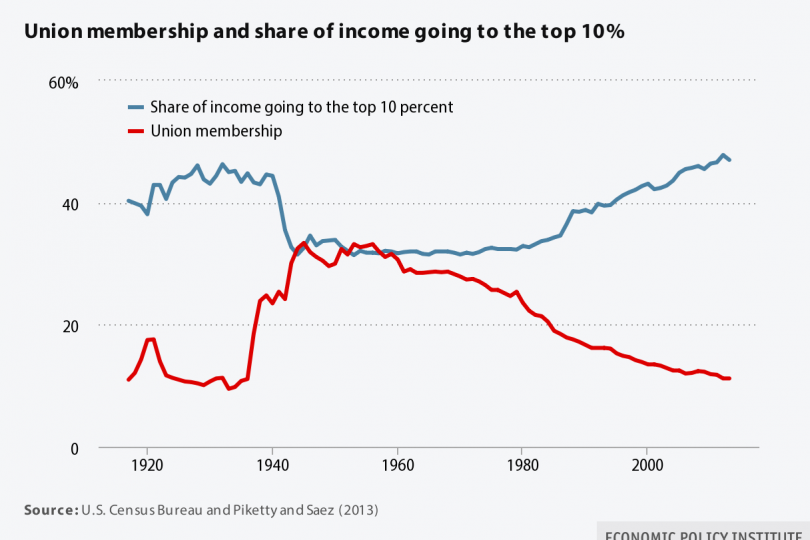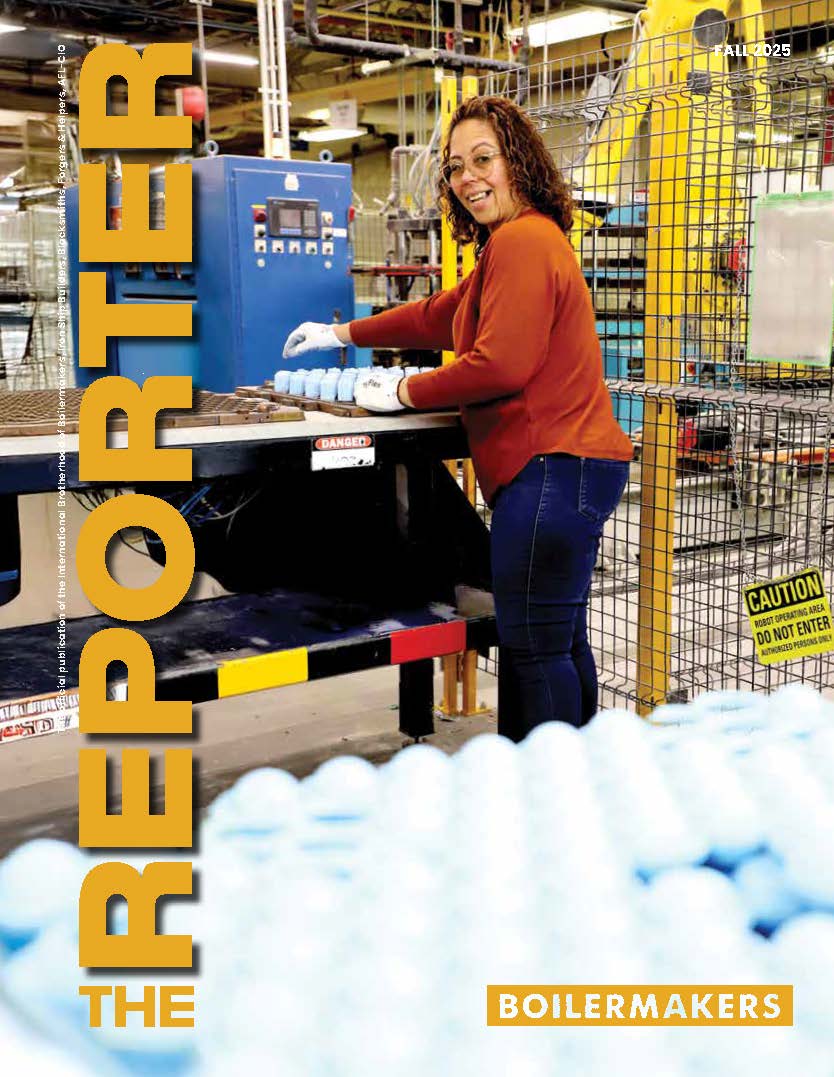Chart illustrates labor density/income inequality connection
THE SHARE OF national income going to the top 10 percent in the United States continues to increase, hitting 47.8 percent in 2012 and apparently continuing an upward trend. That’s the finding of Lawrence Mishel and Will Kimball of the Economic Policy Institute (EPI), a progressive think tank.
Their report, published February 3, includes an updated chart that shows as union density declines, the 10 percent’s share rises. The chart and its underlying conclusion were originally developed and published by Colin Gordon, Professor of History at the University of Iowa.
Mishel and Kimball used recent tax data to adjust the chart. The pair noted that the income share for the top 10 percent stood at 45.5 percent in 2009, as the nation was beginning its recovery from the Great Recession. The 47.8 percent mark in 2012 is a level not seen since 1917, they wrote.
Gordon initially published his findings on an EPI blog in 2012, writing, in part: “Labor unions both sustained prosperity, and ensured that it was shared. The impact of all of this on wage or income inequality is a complex question (shaped by skill, occupation, education, and demographics), but the bottom line is clear: There is a demonstrable wage premium for union workers. In addition, this wage premium is more pronounced for lesser skilled workers, and even spills over and benefits non-union workers. The wage effect alone underestimates the union contribution to shared prosperity.
“Unions at midcentury also exerted considerable political clout, sustaining other political and economic choices (minimum wage, job-based health benefits, Social Security, high marginal tax rates, etc.) that dampened inequality. And unions not only raise the wage floor but can also lower the ceiling; union bargaining power has been shown to moderate the compensation of executives at unionized firms.”
Many American workers feel left out of the current economic recovery. Gordon’s work, updated by EPI’s Mishel and Kimball, goes a long way to explain why.






